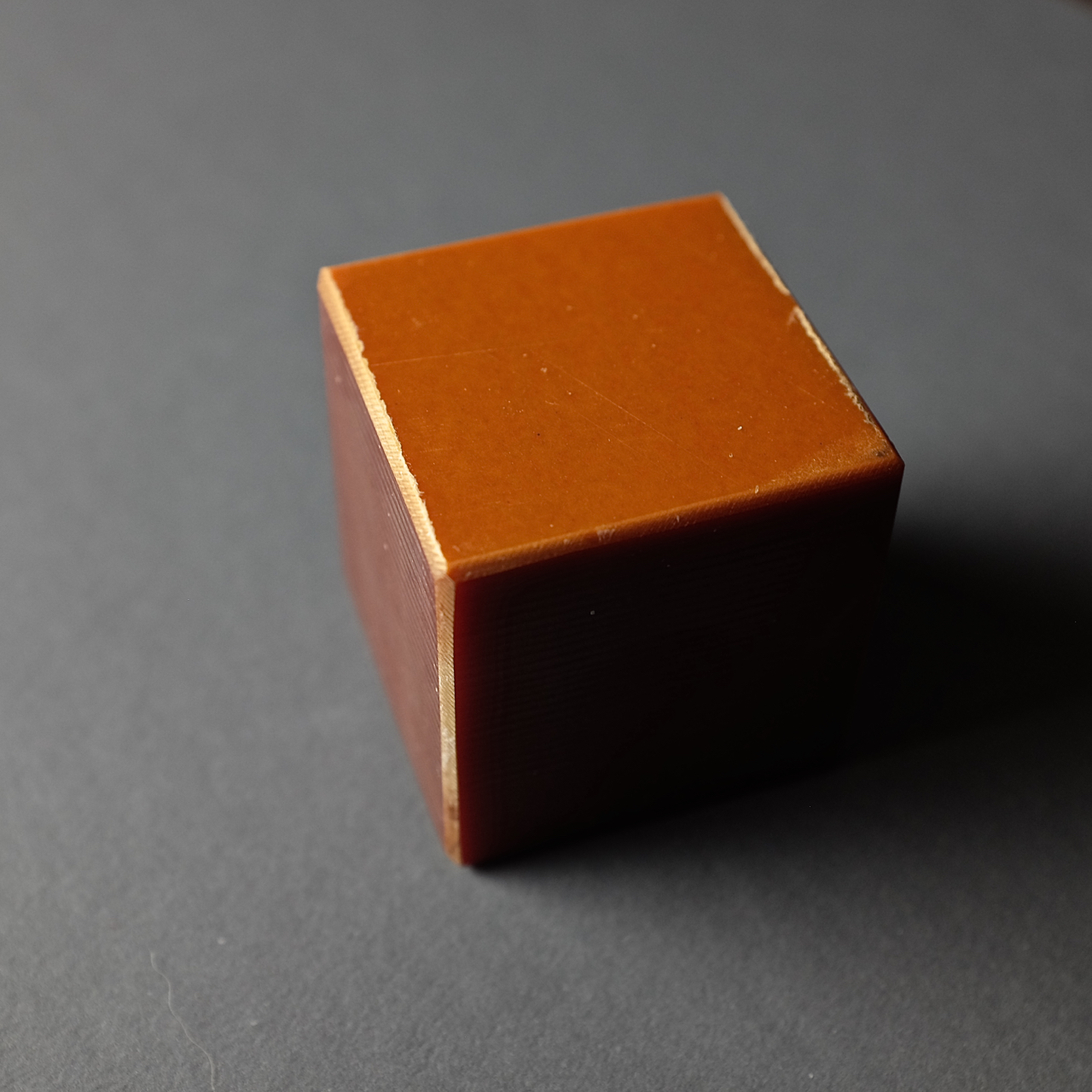Architect's Cubes
The Museum of Modern Art (
MoMA) store sells an interesting collection of eight cubes, called “
Architect's Cubes”, designed by John Bennett and Gustavo Bonevardi. Each cube is made of a different material: acrylic, aluminum, bakelite, cork, EVA, granite, maple wood, and silicone. It seems that quite a few people are unfamiliar with bakelite and EVA.
Bakelite
 |
| Bakelite Cube: photo by Cliff Hutson |
I have a working knowledge of bakelite. As a teenager in print shop class I used it to make molds for the creation of rubber stamps. It could be molded quickly and easily. The molds were smooth, held their shape and were resistant to heat, scratches, and solvents.
It is also resistant to electricity, and has low conductivity. Therefore, it also had a variety of applications in electric shop such as building primitive transistor radios, and other gadgets.
Bakelite was one of the first plastics made from synthetic components. While still in use today, it has been displaced by newer and cheaper plastics. That, and the fact that most school curriculums have eliminated hands on opportunities for working with materials, probably account for the lack of familiarity.
Ethylene vinyl acetate (EVA)
 |
| EVA Cube: photo by Cliff Hutson |
I was one of those people who had no real clue as to what EVA was before the cubes arrived. Once I held it in my hand, I knew I had dealt with it, or a similar material, before, but still could not say what it was. I am not sure researching and finding out that it is ethylene vinyl acetate was much help either.
Ethylene Vinyl Acetate (EVA) Copolymers are conventionally regarded as those copolymers of ethylene and vinyl acetate where the weight percentage of ethylene in the polymer molecule exceeds that of the vinyl acetate.
EVA has a long and successful history of use. Typical applications are cushioning in shoes, flexible hoses, car bumpers, adhesives, sealants, coatings, and flexible packaging.
So, it turns out that the Architect's Cubes are not only lovely to look at and delightful to play with, they also lead to a learning opportunity.















